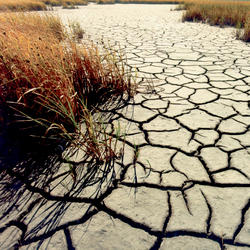Drought, Fire and Extreme Weather
Drought, Fire and Extreme Weather
CASC-supported scientists throughout the country are working to understand how drought, fire and extreme weather are changing under climate change and how they are impacting important natural and cultural resources. Browse our science on these topics below.
Filter Total Items: 275
A Multi-Scale Decision Support Platform for Adaptive Management of Post-Fire Landscapes in the Inland Northwest
Climate change is contributing to an increase in wildfire activity in the western United States, including the Blue Mountains and Eastern Cascades Slopes and Foothills of the Inland Northwest. Some forest ecosystems are changing from forest to non-forest because of severe fires, a hot and dry climate, and/or the absence of a viable seed source. On sites impacted by wildfire, managers are tasked wi
Advancing Climate Change Adaptation Strategies for High Elevation and Endangered Lowland Coquí Frogs in the U.S. Caribbean
Amphibians in the US Caribbean, like the well-known coquí frog, are particularly vulnerable to human-caused climate change. Coquí frogs are represented by 17 species across Puerto Rico and US Virgin Islands and include several mountainous and coastal species that are threatened by extreme heat and drying, loss of coastal freshwater marshes through saltwater intrusion, or both. Over the past decade
Assessing the Needs and Adaptation Practices of Smallholding and African American Farmers Facing Extreme Weather Events in Louisiana
Extreme weather events (such as floods, ice storms, tropical cyclones, and tornadoes) are increasing in frequency and causing severe consequences throughout the U.S. and particularly in Louisiana. These natural disasters are especially devastating for farmers, whose livelihoods depend on the environment. Most climate research and extension outreach focus on large-scale farmers and tend to reach Wh
Assessing Vulnerability of Vegetation and Wildlife Communities to Post-Fire Transformations to Guide Management of Southwestern Pine Forests and Woodlands
Wildfire is a natural and essential process in forest ecosystems, but characteristics of fire regimes that have shaped these landscapes over long time scales are changing with climate change and human activities. In some places, changes in fire size, frequency, and severity threaten to degrade essential ecosystem services that produce clean air and water, fertile soil for crop and wood production,
Building a Coastal Flood Hazard Assessment and Adaptation Strategy with At-Risk Communities of Alaska
Coastal flooding and erosion caused by storms and sea-level rise threaten infrastructure and public safety in Alaska Native communities. Though the problem is well known, there are few tools that can assess local vulnerability to coastal flood hazards. Even fewer tools can be customized with specific community information to support local adaptation planning. The main goal of this project is t
California Reforestation Management Toolshed: A Web-Based Dashboard of Integrating Existing Resources
Millions of acres of California’s forest cover have been lost due to severe wildfire and drought mediatedinsect outbreaks. These acres may not grow back as forests without management action, which could negatively impact carbon sequestration, access to clean drinking water, wildlife habitat and recreation opportunities. Various factors, including limited regeneration potential, hotter and more ext
Characterizing Climate-Driven Changes to Flood Events and Floodplain Forests in the Upper Mississippi River to Inform Management
Floodplain forests along the Upper Mississippi River are heavily managed but understudied systems that provide critical ecosystem services, including habitat for endangered species. Impacts of a changing climate, such as warmer winters and wetter summers with extreme precipitation events, are already influencing hydrologic patterns in these ecosystems, including altering the duration, frequency, a
Cycles of Renewal: Returning Good Fire to the Chumash Homelands
Fire has always been a part of life in southern California. Climate change and current fire management practices have led to catastrophic losses and impacts to human health, infrastructure and ecosystems, as seen, for example, in the 2018 Montecito debris flow. Indigenous wisdom instructs that rather than suppressing fire, we should seek to be in good relationship with fire. This project centers t
Developing and Testing a Drought Early Warning Product in the South-Central United States
Drought is a common result of climate variability in the south-central United States. With increasing temperatures and more variable precipitation patterns expected in the future, drought will continue to stress water quantity and quality in this region. University of Oklahoma researchers have demonstrated that the Palmer Drought Severity Index (PDSI), a measure of long-term drought conditions, ca
Development of a Surface Water Index of Permanence (SWIPe) Database to Assess Surface Water Availability for Ecohydrological Refugia
Surface-water availability has been identified as one of the biggest issues facing society in the 21st century. Where and when water is on the landscape can have profound impacts on the economy, wildlife behavior, recreational use, industrial practices, energy development, and many other aspects of life, society, and the environment. Projections indicate that surface-water availability will be gen
Evaluating How Snow Avalanches Impact Mountain Goat Populations in Southeast Alaska
Snow avalanches alter mountain environments and have both beneficial and harmful effects on wildlife. Avalanches can benefit wildlife by creating open areas for grazing but can also be deadly when animals are buried in avalanche debris. Avalanches pose high risks to mountain goats because they inhabit rugged and steep terrain, but the actual impacts of avalanches on mountain goats remain unknown.
Improving Water Resilience and Availability Through Culturally Prescribed Fires as a Management Tool on Yurok Tribal Lands
Climate Change is making our environment unpredictable. Increased persistence of drought is causing deaths of plants and animals across our landscapes. However, drought amongst the western United States is not a new thing. Native American populations have been living with drought since time immemorial and practiced culturally prescribed fire practices to foster the landscape for an environment tha
















